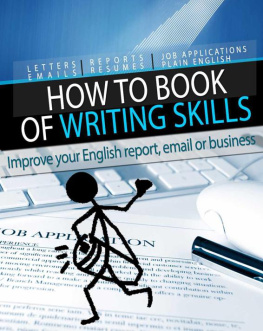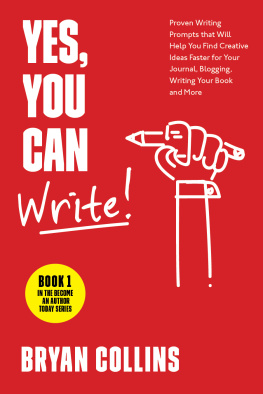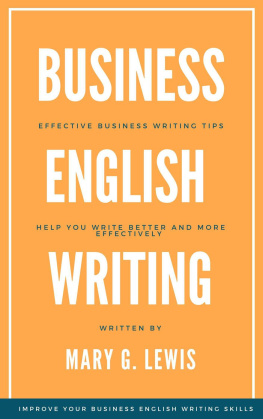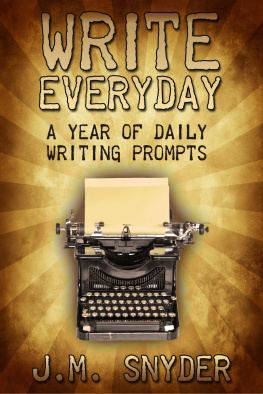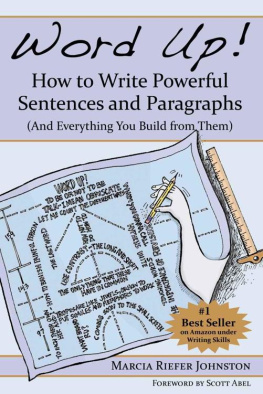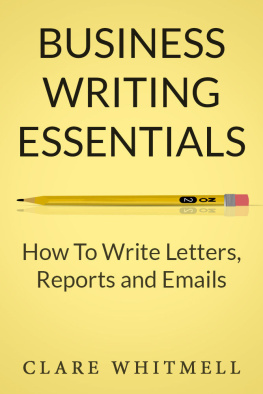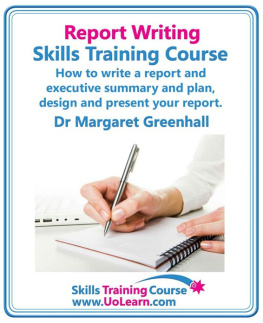Words at Work: The "How to" Book of Writing Skills (Improve your English report, email or business writing skills)
Author
J H Hood
ISBN
978-0-9875575-0-6
Copyright
Copyright 2013 J H Hood
Dedication
To all those people who have and are still walking the learning journey with methank you a thousand times over.
May we continue the journey with joy in the challenges.
Published by
WordCraft Global Pty Ltd
Introduction

It is better to light a candle than curse the darkness
Chinese proverb
We can all write well
For many of us, the simple act of sitting down at a keyboard or a blank page changes us from a vital and competent person into a novice. We freeze, drag our feet, struggleyet still end up turning in a job were not happy with.
It doesn't need to be like that!
Most of the ways we have been taught to write lock us into patterns that dont work well for everyday business writing . These are patterns that weve learned at school, college or universityvery effective for their purposes there... but not what you need for good writing in the workplace!
In this guide you will discover ways to counter those patterns as well as techniques to write well and quickly.
Contents
Plain Englishalso called Plain Language
The first patternwe often think that when we write, we should use different, longer and more complex words than when we speak.
No, No, NO!
The Plain Englishor Plain LanguageMovement is a direct result of people being sick of complicated and formal writing, especially contracts and insurance documents. Plain English has now spread across the English speaking world, and the Movement is now into its thirties!
Business writing is about clarity, simplicity and good techniques not about fancy or lengthy words. Tell me what you want me to know or do, dont be long winded about itand make it easy on the eye!
Your reader will get your message clearly when you use Plain English techniques , those that focus on the audience and where you:
- use everyday English whenever possible
- use simple sentence structure 2 lines is long enough
- use headings and lists direct the readers eye and lead them through the document
- use tables a picture tells a 1000 words
- explain technical terms if necessary
- use the active voice we did it , not it was done by us
- use direct speech we will not the organization shall
- use lots of white space the body language of the document
- are positive when you send us the form we will not we cannot assist until you return the form
One simple counter to the use of complex language is to read something aloud, and then ask yourself this question: If the person was sitting opposite me, w ould I say this to them? If the answer is No then dont write it!
Another way to approach this and to stop yourself getting caught up in complex and confusing language is to imagine you had the person sitting with you, and then to write what you would say to them .
The key is not to translate the clear thoughts and words you have into gooblydook, usually because you think good writing must use long and complicated words.
You will get your message across when you understand that simple is best .
Reverse the Triangle
The second patternat school and during further formal study, we have been taught specific types of writing which are not the best ways of writing business letters, memos, reports or even emails.
There are four broad types of writing and each type requires different skills from us:
- Academic: to demonstrate knowledge, skills in analysis and reasoning
- Evidentiary: to tell the exact story as I experienced itwhat I saw, heard, smelled
- Literary : Shakespeare, Milton, Dan Brown, Bryce Courtney, Tara Moss
- Workplace : to get things done
Most of us have been taught or learned the first three typesat school, at college or tech school or university, or through lifes experience. But, and this is a big but, Workplace Writing requires different techniques
In the two following pictures you can see a key difference between the type of writing most of us have learnedAcademicand what is required for good Workplace writing.
Academic writing has this structure:

What you as the writer want from Day to Day writing is for someone to know or do something.
This is quite different from the usual outcomes required of academic writing, i.e. to demonstrate or describe new knowledge. So, in day to day writing, we need to reverse the triangle :

In this book, you will learn how to turn your written communication into a fluent, effective and satisfying process. You will understand how to:
- plan what you want to say
- be clear about what you want your reader to know or do
- take less time to write your documents
Checklists

There are checklists and examples included at the end of this tooldesigned to help you improve the way you write.
You can use them in a variety of ways:
- to understand your audience
They are a powerful means of improving your writing skills if you use them regularly .
Checklist 1Planning for writing
Checklist 2Improving your writing
Checklist 3Report Writing
Example AEmail subject lines
Example BGood email
Example CConfusing words
Basics of good writing
Say all you have to say in the fewest possible words,
or your reader will be sure to skip them;
and in the plainest possible words
or he will certainly misunderstand them.
John Ruskin 18181900

All Good Writing starts well before your fingers reach the keyboard - it:
- is written for the needs of the audience
- connects with and orientates the reader
- is appropriate for the context in which it will be read
- looks good - invites the reader to continue
- uses simple, active and positive language
And all effective writing has three major elements: purpose; audience; context.
Purpose
What do you want your readers to know or do ? Tell them! Make it cleardont make them work hard to find out. Beware the so what ? response.
Audience
It is not the writers job to make things plain to everyone. It is the writers job to make things plain to the specifically identified audience .
Consider:
- what does your audience already know?
- dont assume knowledge, but dont tell them again and again!
Next page
